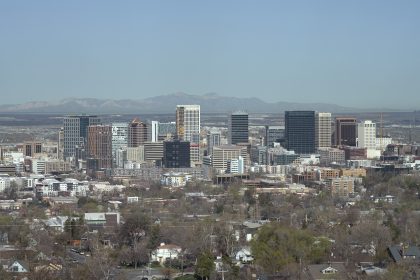Time for Congress to Fix Leave Protections for Forgotten Frontline Workers in Next Relief Bill
COMMENTARY

Every day, Joyce Barnes starts work at 7 am. She wraps up at 10 pm to go home. And she’s done this for more than three decades as a home health care worker. One of Joyce’s patients suffered a stroke earlier this year and cannot get up in the morning or go to bed at night without her assistance. Another is a double-amputee who relies on her for help bathing, cooking, and with other chores. It’s work you can’t do from six feet away. And for these long days of physically exhausting work, Joyce makes under $10 an hour.
It is unconscionable that Joyce — and millions like her — have been cut out of the emergency paid leave protections Congress passed in March.
Despite being deemed an “essential” worker, Joyce does not receive a single day of paid leave to fall back on when she is sick or needs to take care of members of her own family. That was true before the pandemic and it’s true today, even as COVID-19 has infiltrated one of the buildings where she works.
“I can’t afford to miss any time,” Joyce said. “If I miss any time, I have bills that I can’t afford to pay…I’m deathly scared now that I know it’s in the building that I work in. I never know if I get sick, what’s going to happen.”
Joyce is worried not just for her own health, but the health of her patients, and the health of her family.
The United States is one of the only countries in the world that doesn’t guarantee any kind of paid leave. When the pandemic hit 4 in 5 US workers did not have access to paid family leave through a private sector employer. More than 35 million workers did not have a single paid sick day. Even before the pandemic, working families would lose $22.5 billion each year in wages because they lack access to paid leave for health and care giving needs.
This was a crisis well before March, but a pandemic puts this failure into stark relief. Congress tried to address this on a temporary basis by introducing emergency paid leave protections in the Families First relief package. But in negotiations, millions of workers got cut out. And the Labor Department went even further, issuing regulations that nearly gutted the law.
Today, many grocery, pharmacy, and health care workers on the front lines are not eligible for the emergency paid leave protections Congress put in place. Big businesses were exempted. Essential workers too. Data shows that an estimated 68 million to 106 million private sector workers are being excluded, including nearly 9 million health care workers and emergency responders working to keep us safe nationwide. These are the workers who face the highest probability of exposure. And at the end of the day, as few as 17% of private sector workers could actually be eligible for paid leave benefits in the law. This puts all of us at risk.
The need for paid leave has quite literally never been greater. Google searches for paid leave have gone up over 400% since the pandemic hit.
New polling also shows paid leave is the most popular policy response to the pandemic among voters in 11 U.S. Senate battleground states and 42 frontline districts in the U.S. House of Representatives. While paid leave has long received majority support from the public, these findings indicate that in the wake of COVID-19, paid leave could also be a decisive issue for voters in some of the country’s most critical areas in determining which parties control Congress through 2022.
Among likely frontline congressional voters, 86% support paid leave while support among battleground Senate voters is at 85%. Ninety-two percent of voters in frontline congressional districts and 94% of Senate battleground state voters support providing workers who become sick during the COVID-19 pandemic with paid leave.
This is something workers, and voters on both sides of the aisle, want — and Congress should listen.
Paid leave is a foundational public health and economic security issue — especially in the face of a pandemic. In this crisis and our recovery, paid leave will keep us attached to jobs and benefits, keep schools and workplaces safe, protect those on the front lines and all of our families: paid leave will save lives and help us build back better. When corporations sucked dry the small business loans that were passed in the CARES Act, Congress went back and replenished the funds. Now, they need to make it right with workers by passing the PAID Leave Act in the next COVID-19 relief package and closing the loopholes that left so many behind.
“I just want to know when they are going to approve leave for us,” Joyce said, “because we’re on the frontlines too. I’m tired of us being the forgotten ones. They forget about us in the end when we need help too.”
Dawn Huckelbridge is the director of the Paid Leave for All campaign.
























